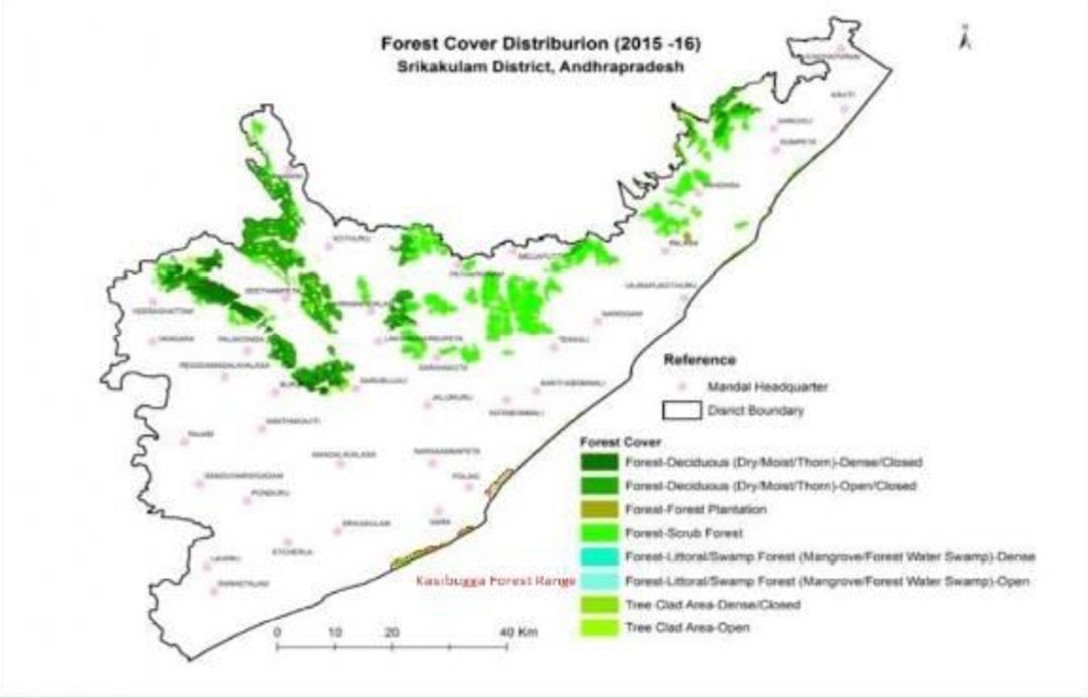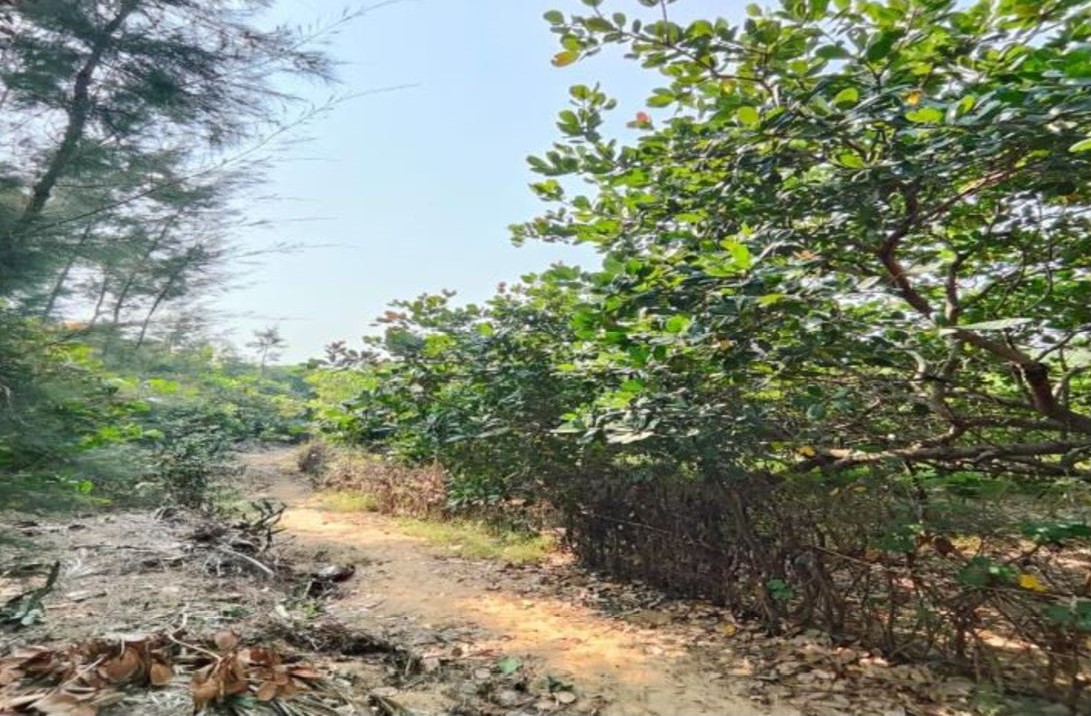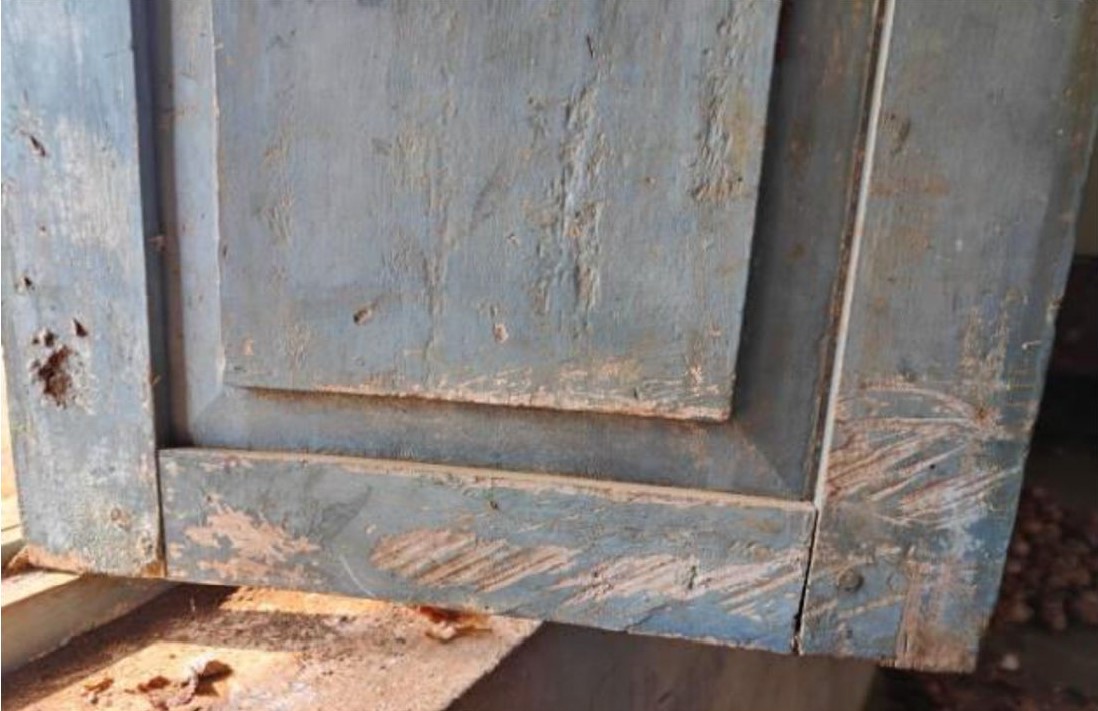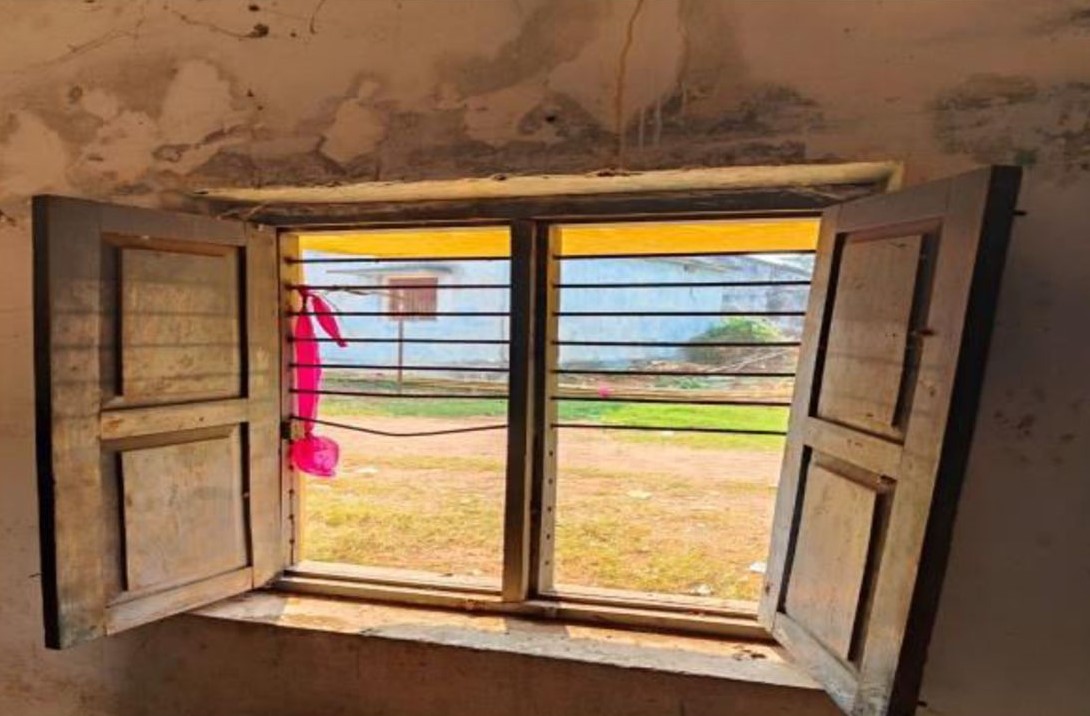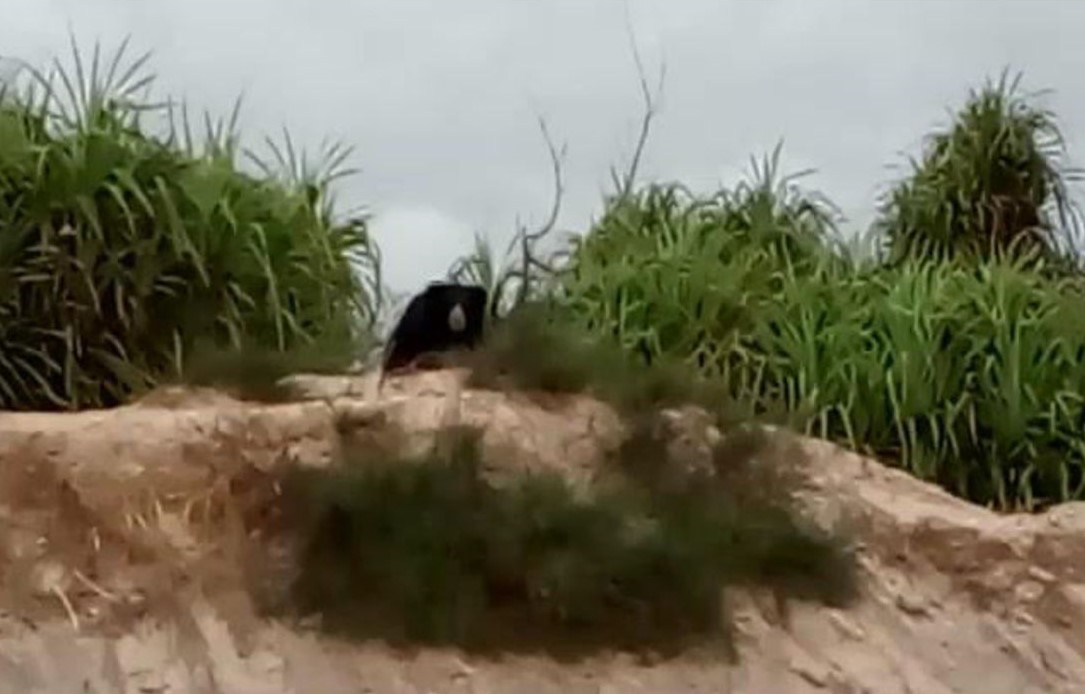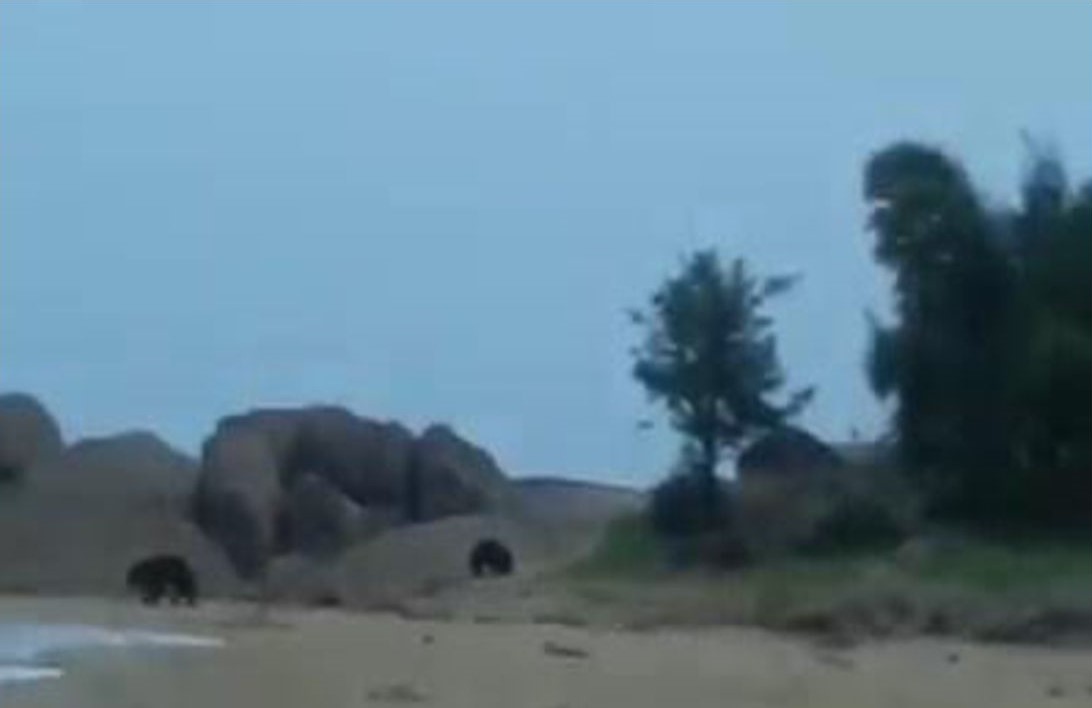Previous Issues Volume 7, Issue 2 - 2023
Seasonal Food Habit Variation of Sloth Bear (Melursus ursinus) in Feeding Turtle Eggs in Kasibugga Range of Srikakulam District, of Andhra Pradesh
Keny J Newport1,*, Somesh2 Supraja Dharini3
1State Coordinator, Turtle Conservation Project, Tree Foundation, Tree Foundation, Turtle Conservation Project, 5/25, Blue Beach Road, Neelankarai, Chennai
2Field Executive, Turtle Conservation Project, Tree Foundation, Turtle Conservation Project, 5/25, Blue Beach Road, Neelankarai, Chennai
3Director, Tree Foundation, Turtle Conservation Project, 5/25, Blue Beach Road, Neelankarai, Chennai
*Corresponding Author: Keny J Newport, State Coordinator, Turtle Conservation Project, Tree Foundation, Tree Foundation, Turtle Conservation Project, 5/25, Blue Beach Road, Neelankarai, Chennai – 600115; Email: [email protected]
Received Date: April 7, 2023
Publication Date: May 16, 2023
Citation: Newport KJ, et al. (2023). Seasonal Food Habit Variation of Sloth Bear (Melursus ursinus) in Feeding Turtle Eggs in Kasibugga Range of Srikakulam District, of Andhra Pradesh. Mathews J Vet Sci. 7(2):21.
Copyright: Newport KJ, et al. © (2023)
ABSTRACT
In India, the sloth bears are found from the foothills of Himalayas to the southern end of Western Ghats. Although widely distributed, the population of Sloth Bear is declining due to habitat loss and diminished food resources. There is a distinct seasonal variation in the food habits of the sloth bears in many parts of India due to scarcity of food. Insects, mainly the termites and ants are the most important food source for sloth bears, along with fruits are consumed in proportion to availability. In Southern India, it is interesting as Sloth Bears are found in the coastal habitat of Kasibugga range of Srikakulam District of Andhra Pradesh feeding on the eggs of Olive Ridley turtles that are laid on the sea shore from December to March during the winter seasons and on fruits of cashew plantations from March to June, the summer months. Sloth Bear has an excellent sense of smell in finding the turtle eggs. Our field observational study revealed, even though Sloth Bear is an omnivore; their diets vary seasonally and geographically as the eggs of turtles serve as protein rich food supplement in this particular coastal region. In our discussions, the villagers, told that sloth bears invade the coastal areas of Kasibugga range during turtle breeding season as the eggs and seedlings serve as seasonal diets which is a unique phenomenon reported only in this part of the world.
Keywords: Coastal Habitat, Sloth Bear, Turtle Eggs, Olive ridley, Kasibugga Range, Seasonal Food
INTRODUCTION
The Sloth Bear (Melursus ursinus) occurs commonly and is distributed widely across the tropical forests of the Indian subcontinent. However, its distribution is patchy corresponding with the present forest cover. Sloth Bears are found in most non-arid, low-altitude forests of India. As a result of the continued habitat destruction and degradation, sloth bear populations have declined or become fragmented (Cowan, 1972) [1] in many parts of India.
Sloth bears (Melursus ursinus) are medium-sized mammals that are found in the Indian subcontinent. Currently, much of the sloth bear range occurs outside protected areas in fragmented forests (Jhala et al., 2011) [2]. Sloth bear is included in Schedule I of Indian Wildlife Protection Act 1972 and Appendix I of CITES (Committee on International Trade in Endangered Species of Wild Flora and Fauna). The population of sloth bear in India is estimated to be anywhere between 6000 to 11000.
The Sloth bears are known for their long, shaggy fur, and their peculiar dietary habits. They have a long shaggy black and a long dorsal ruff of hairs and a V or Y shaped chest mark in white hair. Large males rarely exceed 145 kg and I70cm in length. The Sloth bear differs from the other species of bears in having highly specialized morphological adaptations for feeding on insect prey. It has protractible mobile lips, a mobile snout and nostrils which can be closed voluntarily. The first pair of maxillary incisors are absent. The bony palate is hollowed and extends farther back relative to the last molar tooth than in any other bear. The reduced hair on the muzzle is probably an adaptation to cope with the defensive secretions of some termites.
Sloth bears are primarily omnivorous, and they feed on a variety of foods including insects, fruits, and small animals (Baskaran N. and Kannan V., 1998) [3]. However, the exact composition of their diet varies seasonally based on the availability of food resources. The sloth bears are omnivores as their activities are governed by the availability of food items and dietary components within their habitat. Nutrition plays an important role in the reproductive rate of female bears (Jonkel and Cowan, 1971) [4]. It has been documented in studies that most species of bears feed on insects, especially ants (Joshi et al., 1997) [5]. However, the sloth bear has myrmecophagous adaptations to feed on insects, especially termites and ants (Laurie and Seidensticker, 1977) [6]. Overall, sloth bears consumed a wide range of feed categories throughout the year and this large spectrum of feed species in the diet confirmed the nature of sloth bears as opportunistic and generalist species. Sloth bears show distinct seasonal variations in their food habits, consuming the food resources according to their seasonal availability (Davidar, 1983) [7].
Sloth Bears typically breed May through July, and females give birth, usually to one or two cubs, from November to January. Cubs often ride on the mother's back during their first nine months, presumably to reduce the risk of predation. Cubs remain with their mothers for 1.5-2.5 years resulting in a 2 or 3 year inter birth interval (Thomas et al., 2007) [8].
The objective of the study is to document food habits of sloth bear with particular focus on turtle eggs in a highly disturbed and fragmented habitat in particular seasons. They have a distinct instinct of identifying the eggs laid by turtles and the turtle hatchlings in the coastal zone of Kasibugga Range through their excellent smell sense. As they got sickle type of claws of 3 inches in length, they can easily remove the top coastal soil to prey on turtle eggs. The eggs provide a good protein supplement in their food chain.
MATERIALS AND METHODS
Study Area
The study area included the 24 villages in Kasibugga Range in Srikakulam District of Andhra Pradesh. The total coastalareas include 860.17 ha. Between 18o17' latitude to 84o27' longitude (Figure 1). The 14 coastal villages located in Kasibugga range is the breeding ground for Olive Ridley turtles during December to May as the soil is sandy which is ideal for laying eggs. The northern coastline of the district is rocky with some sandy beaches and the central coast has river deltas and mangrove swamps and the southern coast is largely sandy where the breeding of turtles is commonly observed every year as the coast is ideal for laying eggs for the turtles.
Figure 1: Srikakulam District Map with Forest Cover.
The vegetation found along the coast are strand vegetation (Ravi Prasad B et al.) [9]. The natural beach flora along this coastline comprises mostly Manal Keerai (Gisekia pharnaceoides), Beech Morning Glory (Ipomoea pes-caprae), Ravans Moustache (Spinifex littoreus), Puncture Vine (Tribulus terrestris) are some of the common plants found along the beech of Kasibugga range. As the coastal vegetation is not dense, these sandy soils are best suitable for the turtles to lay eggs. Studies also reveal that turtles prefer sandy soil for breeding than coastal land with dense vegetation.
Habitat available for sloth bears within the Forest range is highly degraded and interspersed with villages and agricultural fields. Survival of sloth bears depends on the availability of suitable habitat along boulders, rocky out crops and sparse coastal forests in this area and cashew plantations. The degraded forest has cashew trees and also villagers are involved in cultivating cashew plants as the fruits and seeds provide income (Figure 2).
Figure 2: Cashew Forest in Kasibugga Range.
Because of lack of irrigation facilities during summer season, local inhabitants grow crops only during the monsoon season (July to October). Local people also collect non timber forest products and fuel wood and graze cattle in the forest fragments.
DATA COLLECTION
Species survey
The study was made with field level observations on the beach in the early hours and discussion with the coastal villagers. The sightings of the sloth bear was reported in and around 14 coastal villages and 10 inland villages that are close to the shore villages are observed in Kasibugga range in an area extent of 860.17 ha.
Our interview with village elders also confirmed the movement of sloth bear during particular season. The villager’s revealed conflict between Humans and Wildlife has resulted in death also. The last death was reported in the year of 2021, while a villager was collecting the cashew fruits in the forest.
We have observed the nail marks of sloth bear in the Anganwadi center (Figure 3) in the villages as food materials are stored in the kitchen. Also, we have noted that sloth bears have broken the iron rods in the window (Figure 4), entered the kitchen and consumed sunflower oil stored in containers for cooking.
Figure 3: Sloth Bear Nail Marks.
Figure 4: Broken window of Anganwadi Center by Sloth Bear.
Figure 5: Sloth Bear Spotted in Geddavaru Beach Kasibugga Range.
Figure 6: Sloth Bear in Melaganguvada Coast Kasibugga Range.
Table 1: Hamlets reported with Sloth Bear Movements.
|
S.No |
Village |
Latitude |
Longitude |
Sightings |
Beat |
Area Extent in Hec |
|
1 |
Vajrapu Kothuru |
18.41.424 |
084.27.071 |
Coastal Area |
Metturu |
457.32 |
|
2 |
Dokulapadu |
18.42.541 |
084.27.885 |
Coastal Area |
Metturu |
|
|
3 |
Akkupalli |
18.44.155 |
084.29.339 |
Coastal Area |
Metturu |
|
|
4 |
Thoturu |
18.45.395 |
084.30.655 |
Coastal Area |
Metturu |
|
|
5 |
Metturu |
18.46.722 |
084.30.643 |
Coastal Area |
Metturu |
|
|
6 |
Bypilli |
18.45.294 |
084.30.166 |
Coastal Area |
Metturu |
|
|
7 |
Melaganguvada |
18.47.210 |
084.32.859 |
Coastal Area |
Metturu |
|
|
8 |
Bethalipuram |
18.47.873 |
084.33.259 |
Coastal Area |
Metturu |
|
|
9 |
Marripadu |
18.49.504 |
084.32.899 |
|
Metturu |
|
|
10 |
Dunnuru |
18.49.403 |
084.33.233 |
|
Metturu |
|
|
11 |
Chinna Dunnuru |
18.49.626 |
084.33.365 |
|
Metturu |
|
|
12 |
Mogulupadu |
18.49.732 |
084.33.279 |
|
Metturu |
|
|
13 |
Nolluru |
18.49.769 |
084.33.531 |
|
Metturu |
|
|
14 |
Nalla Boddilluru |
18.48.713 |
084.30.990 |
|
Mandasa |
224.6 |
|
15 |
Narayanapuram |
18.49.759 |
084.30.583 |
|
Mandasa |
|
|
16 |
Ambagam Boddilluru |
18.50.018 |
084.31.181 |
|
Mandasa |
|
|
17 |
Ratti |
18.49.077 |
084.32.671 |
Coastal Area |
Mandasa |
|
|
18 |
Sinkalputtiga |
18.49.635 |
084.31.817 |
|
Mandasa |
|
|
19 |
Gaddavuru |
18.49.948 |
084.33.744 |
Coastal Area |
Baruva |
178.25 |
|
20 |
Pitali |
18.50.066 |
084.33.818 |
|
Baruva |
|
|
21 |
Yerramukkam |
18.50.399 |
084.33.919 |
Coastal Area |
Baruva |
|
|
22 |
Srimamidi |
18.50.560 |
084.33.969 |
|
Baruva |
|
|
23 |
Rajam |
18.51.378 |
084.33.968 |
|
Baruva |
|
|
24 |
Battigalluru |
18.51.521 |
084.34.862 |
Coastal Area |
Baruva |
|
|
|
Total |
|
|
|
|
860.17 |
The details of sloth bear observed in the coastal and nearby hamlets of Kasibugga Range in Srikakulam District of Andhra Pradesh is given in Table 1.
OBSERVATIONS AND ANALYSIS
We have observed the invasion of sloth bear in the coast of Geddavaru beach of Kasibugga range in the month of February as olive ridley started to lay eggs. Our discussion with the villages revealed that they are found from January to May in search of eggs and hatched turtle seedlings. The sloth bear feed on the turtle eggs and seedlings as their seasonal diets. They identify the turtle nests as they have strong sense to smell as Turtles secrete a mucous while laying eggs.
Sloth bears are also observed in the Melaganguvada coast in Kasibugga range of Srikukalam District. They visit the shore area only for turtle eggs and also seedlings for their food during the turtle breeding season which starts from December till May. It is an instinct of sloth bear to adopt seasonal diets as they have good sense of smell for turtle eggs.
RESULTS AND DISCUSSIONS
Our observational study revealed that the dietary habits of sloth bears vary seasonally based on the availability of food resources. During the monsoon season, sloth bears feed on a large number of insects and fruits, which are abundant during this time. During the dry season, sloth bears primarily feed on fruits and small animals such as rodents and birds and also found plenty of turtle eggs during the summer months. The availability of food resources also affects the movement patterns of sloth bears, as they tend to follow the seasonal availability of their preferred foods.
The presence of sloth bear in the coastal area has been observed since 2017. Our observations revealed that sloth bear feeds on turtle eggs and hatched seedlings as their seasonal food supplement during summer months. Our discussion with the villagers confirmed the presence of sloth bear in the coastal region for food especially in turtle breeding seasons. It is very interesting that sloth bear thrives in coastal habitat in Kasibugga range as adopting to seasonal diets is a unique characteristic observed in sloth bear food habit.
Hence the seasonal food habit variation of sloth bears is an important aspect of their ecology and behavior. Understanding the dietary habits of sloth bears is crucial for their conservation and management. Further research is needed to gain a better understanding of the dietary habits of sloth bears, especially in areas where they are threatened or endangered.
REFERENCES
- Covan LM. (1972). The status and conservation of bears (Ursidae) of the World-1970. International Conference on Bear Research and Management 2:343-367.
- Jhala YV, Qureshu Q, Gopal R, Sinha PR. (2011). Status of the tigers, co-predators, and prey in India.
- Baskaran N, Kannan V. (1998). Food habits of sloth bear (Melursus ursinus) in Mudumalai Wildlife Sanctuary, southern India. J Zoology. 245(2):269-279.
- Jonkel CJ, Cowan IM. (1971). The black bears in the spruce-fir forest, Wildlife Monograph 27.
- Joshi AR, Garshelis DL, Smith JLD. (1997). Seasonal habitat-related diets of sloth bears in Nepal. J Mammalogy. 78:584-597.
- Laurie A, Aurie J, Seidensticker J. (1977). Behavioral ecology of the sloth bears (Melurusus ursinus). Journal of Zoology (London). 182:187-204.
- Davidar ERC. (1983). Sloth bear’s (Melursus ursinus) method of hunting for termite nests. J Bombay Natural History Society. 80:637.
- Spady TJ, Lindburg DG, Durrant BS. (2007). Evolution of Reproductive Seasonality in Bears, Mammal Review.
- Prasad BR, Reddy MS, Pullaiah T. (2008). Reproductive Ecology, Seed Biology and Population Structure of Croton scabiosus Bedd (Euphorbiaceae) and endemic tree of Southern India.
